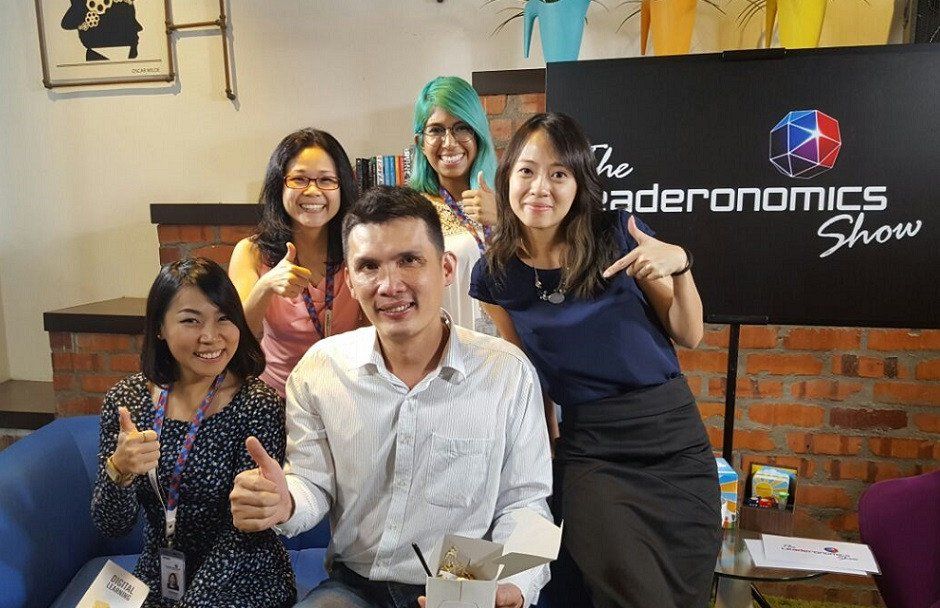Evolving Leadership in the Digital Age

To have executives change character will always be an uphill struggle but they can learn to improve their behavioural reactions to difficult situations and develop greater emotional intelligence that will turn them into more effective leaders.
Studies show that organisations that take leadership development seriously outperform their competition. This holds greater truth today when leaders in this cyber age find themselves under greater (and increasing) pressures from globalisation. Twenty-five years ago, very little attention was being paid to the idiosyncrasies and irrational processes that make up individual behaviour. Corporations and business schools were preoccupied with models of the rational economic man, not realising that executives are everything but rational decision makers. The emotional aspects of leadership, the importance of corporate culture were all but ignored. Leaders at that time were expected to simply leverage their vision and skills to create sustainable, results-oriented organisations.
Today they face added complications of rapidly changing technology, virtual working teams separated by cultural and geographical boundaries, and the difficulties of making decisions when faced with an overload of information. Recently a former participant from one of my Challenge of Leadership (COL) programmes approached me at a fundraising event in Holland and introduced himself. It had been 15 years since he took my class and I couldn’t place his face. But always being on the lookout for feedback, even many years on, I asked him whether the programme had an impact and he told me yes, in fact, it had taught him three things. In the first place, it helped him have the courage to quit his job and become an entrepreneur which had made him very wealthy. Secondly, it made him change his relationship with his son, which turned out to be a very good investment, and thirdly, he had learned how to be more effective in speaking up – to work out what it was he was wanted to say and to have the confidence to say it.
In fact, what happened to him during the COL program were three tipping points, the kind of “aha” moments that give people the insights they need to change or develop their behaviour in a way that better supports their personal and organisational goals. When I created the programme I had in the back of my mind the “fantasy” to make INSEAD the foremost business school in “soft skills,” which (when it comes down to it) are the “hardest skills.” Organisations have followed this fantasy over the last 25 years too because they’ve realised that it’s critical to success. Modern organisations look more and more like a matrix starship, where many ideas develop, and the challenge in putting these ideas into action becomes a very different story. Vision without action is a hallucination, and execution is where many well-intended decisions get bogged down. To make things happen - to arrive at seamless execution - requires a leadership model that is less autocratic but more of an authoritative and networking nature.
We have moved from the “Command, Control, Compartmentalisation” way of leading organisations to a more interactive, informative, and Innovation-oriented model. To be truly effective, today’s organisations need to have leaders who have the emotional intelligence to create meaning and have the capability to inspire and empower their people to get things done. This becomes especially difficult when the members of an organisation are spread across different continents. After all, you can’t email a smile or a handshake. You need to create places of work where people feel comfortable in a network structure; you need to create organisations where people can have courageous conversations - organisations with people that are adaptable, self-aware, collaborative, resilient, and have a systemic orientation. To create these agile organisations we need people that practice true knowledge exchange and will go beyond silo thinking.
Read Next: The Leadership for Digital Transformation
Why are so many leaders self-destructive?
As executives climb higher up the corporate ladder these soft skills become even more important. It is no longer enough to be a functional manager. Ultimately leaders need to get out of their functional silo to be able to get the best out of people. Unfortunately, many executives fail to rise to the occasion; they simply don’t know how. The question I often asked myself 25 years ago, and continue to ask myself today is: Why are so many leaders self-destructive? Why are so many executives so poor in developing well-functioning teams? Why have so many organisations a gulag quality?
The truth is despite having a greater awareness of their role many successful leaders still share a great sense of anxiety and insecurity. Many leaders are very unaware of the effect their actions have on others. Basically, they have very little idea what they are all about. They are strangers to themselves. And due to their insecurities they may resort to highly dysfunctional behaviour. Also, many of these over-achievers are continually asking themselves, am I good enough? Am I up to the job? When will people realise that I shouldn’t have this position in the first place? This is known as the imposter syndrome. Some compensate by becoming more narcissistic in their behaviour to convince themselves and everyone else that they are truly special. They may suffer from hubris, contributing to irresponsible actions. Some of them resort to an alpha male, silver-backed gorilla style of leadership. While leaders have had to become more sophisticated over the past three decades to improve their horizontal communication to get things done, in times of stress they can regress very quickly and fall back into this kind of autocratic behaviour as a default pattern.
At the COL programme (run over a four week period over a year) we bring very senior executives together to learn from each other, and to help each other become more reflective in action on a day-to-day basis by asking themselves what are they are doing and how are they doing it before they act. Through the use of the “life case study” (meaning they are the cases), they become more self-aware of why they doing what they are doing. COL follows the old injunction: “Know Thyself.” By focusing on conscious and unconscious behaviour, as well as rational and irrational action, they learn to prevent irrational and dysfunctional processes in their companies.
Eventually, the methodology learned from COL contributed to the creation of INSEAD’s Global Leadership Center (IGLC); it made INSEAD the leading business school in the world in group coaching; and it also created the foundation for the Executive Master’s in Coaching and Consulting for Change (EMCCC), a successful programme now given on two continents. People's “transformation” turned into one of the five principal pillars of excellence that distinguishes INSEAD from other business schools.
Changing role of leadership
Today’s corporate world is going through a shift not seen since the second industrial revolution. The enhanced capabilities and affordability of technology caused by digital innovation have led to fundamental changes in how business is conducted, organisations are managed, and consumers behave. As the world is changing, leadership is no longer defined by what a single leader does (the “Great Man" theories) but by the ability to collaborate, motivate and manage networks. Leadership has become a team sport; leadership behaviour needs to be distributed throughout an organisation.
Leadership success today has to do with the way people think, the way they feel, the way they behave in a responsible manner. This is more than charisma and it is not something that can be learned in three easy steps or over a single programme. Strong leadership requires continuous development. Clever people don’t necessarily become wise. But they can learn how to find ways to cope with stressful experiences by getting to know themselves. It’s always good to keep in mind that leaders are like wine. Some turn out great; others may turn into vinegar!
Interested to learn more about being a leader in this digital age? Watch the amazing video below on the four areas of leadership skills: Personal Mastery, Functional Mastery, Business Mastery, and Leadership Mastery by Roshan Thiran, Founder and Group CEO of Leaderonomics!
Enjoyed the article? Continue your journey with us by checking out Necole, a state of the art learning platform that curates personalised learning just for you to accelerate your growth! To find out more about Necole, click here or email info@leaderonomics.com.

Leadership
Tags: Be A Leader
Manfred F. R. Kets de Vries is the Distinguished Clinical Professor of Leadership Development & Organisational Change at INSEAD and the Raoul de Vitry d'Avaucourt Chaired Professor of Leadership Development, Emeritus.





